Can A Tortoise Live Outside? Three Benefits
Tortoises live everywhere on earth except Australia and New Zealand. Though some species live in rainforests, most tortoises live in dry desert areas. When kept as pets, most tortoises live indoors within small enclosures.
However, can a tortoise live outside? Yes, all tortoises can live outside, but before you keep yours outdoors, it’s important to consider the following factors;
- Tortoise species
- Climate
- Local regulations
- Safety from predators
- Are shaded areas available?
- Is your outdoors a suitable habitat?
Keep reading to learn more about the factors to consider before leaving a tortoise outside and the merits and risks of doing so.
Can A Tortoise Live Outside?
Contents
Yes, a tortoise can live outside. After all, wild tortoises live outside their entire lives! However, before you consign your pet tortoise to life outdoors, there are several factors you should consider;

1. Climate
Though tortoises can comfortably live outside, your area’s climate should be similar to their natural habitat’s climate. For instance, if your tortoise’s natural habitat’s climate is a wet rainforest, it may experience difficulty living in a dry, hot area.
2. Species
Every tortoise species has evolved unique adaptations that enable it to survive and thrive in its niche and climate. Consequently, some tortoise species are more resilient and better suited to living outdoors than others.
Hence, if you intend to keep your pet tortoise outside, you must conduct research and find a species that will be comfortable with that living situation.
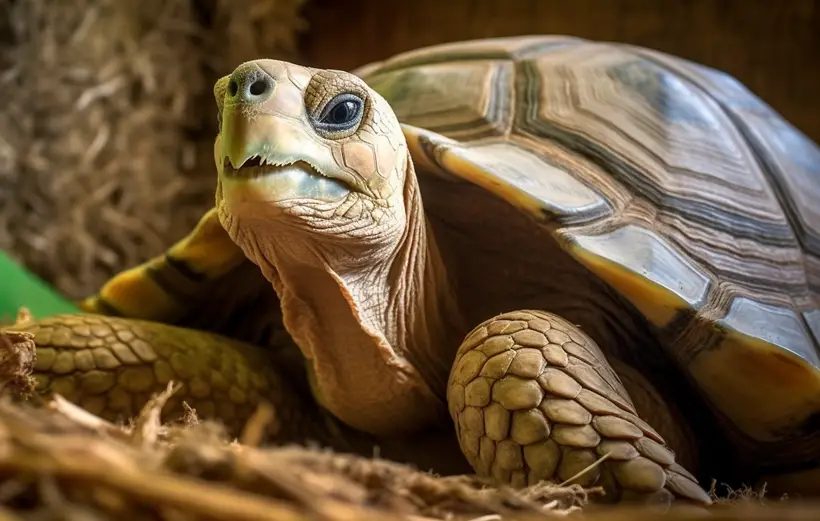
3. Local law
In most areas, there are laws governing the ownership and treatment of tortoises. Before setting up your tortoise to live outside, you should familiarize yourself with your local tortoise’s regulations to avoid encountering legal problems.
4. Habitat
Before keeping your tortoise outside, ensure your outdoors mimics or resembles the animal’s natural habitat. Ensure the area contains the type of plants the tortoise would normally graze on in the wild and the appropriate substrate for burrowing.
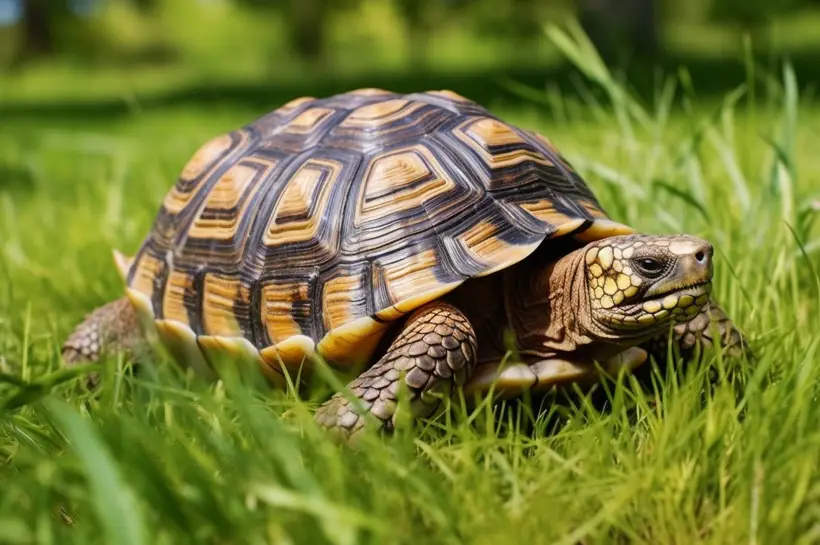
For an ideal outdoor habitat, the soil that makes up the substrate should be loose and slightly wet. Areas with densely compacted soil make bad habitats because tortoises can’t burrow into it.
5. Safety
If your tortoises live outside, you must protect them from predators. In this case, you should erect a fence around the tortoise’s habitat to deter predators like coyotes and kit foxes.
Tortoises are also hunted by birds of prey like eagles. So, if you live in an area with eagles, you must put up a wire mesh roof to prevent attacks.
6. Shaded areas
Since tortoises and reptiles are cold-blooded, their body temperature depends on the environment. Hence, living outside is great because the tortoise can bask in the sun to raise its body heat.
However, temperatures outside can get too hot sometimes, especially during summer. As a result, you must ensure that your tortoise has access to a shade where it can take a break from the hot sun to cool down. A cool shaded area helps a tortoise control its temperature and prevents fatal heatstrokes.
Advantages Of Keeping Tortoises Outside
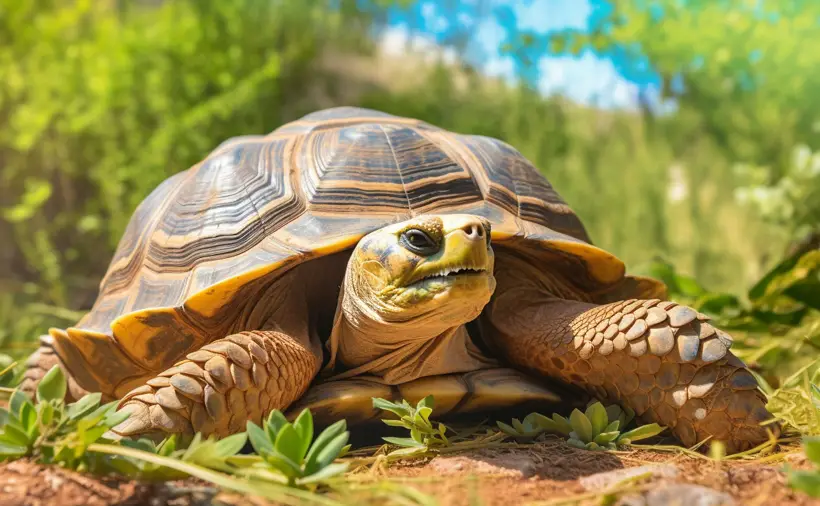
There are several advantages to keeping your tortoise outside, including the following;
1. Exercise
Living outside allows a tortoise to engage in the kind of behavior it would engage in in the wild, such as exploring and foraging. These activities prevent boredom and keep the animal in good shape physically.
2. Basking
Basking in the sun is essential for tortoises not only because it helps them regulate their body temperature but also helps synthesize vitamin D. According to experts, a tortoise needs to bask for at least 30 minutes every day to synthesize the required amount of vitamin D.
3. Comfort
Keeping a tortoise outside allows you to mimic the conditions found in its natural habitat more accurately. And mimicking a tortoise’s natural habitat also reduces stress by helping the animal acclimate and become comfortable with new surroundings.
Risks Associated With Keeping Tortoises Outside
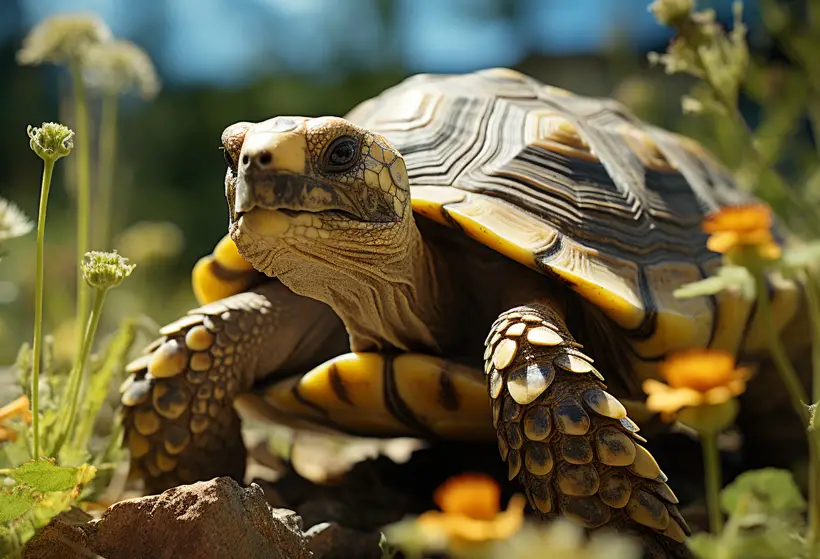
Though keeping tortoises in the outdoors has many advantages, it also comes with its fair share of risks, including the following;
Getting lost or exposed to predators
Tortoises love to explore their surroundings, so if you keep them outside without adequate enclosures, they can wander off and get lost or your pet tortoise could also be exposed to predators.
Extreme weather
Living outside means your tortoise is at the mercy of the prevailing weather conditions. Though tortoises are adapted to handle different conditions, extreme weather can pose serious problems.
Diseases
Living outside increases the odds of your tortoise contracting diseases by interacting with other animals or coming into contact with harmful bacteria and parasites.
Common Types Of Outdoor Enclosures For Tortoises
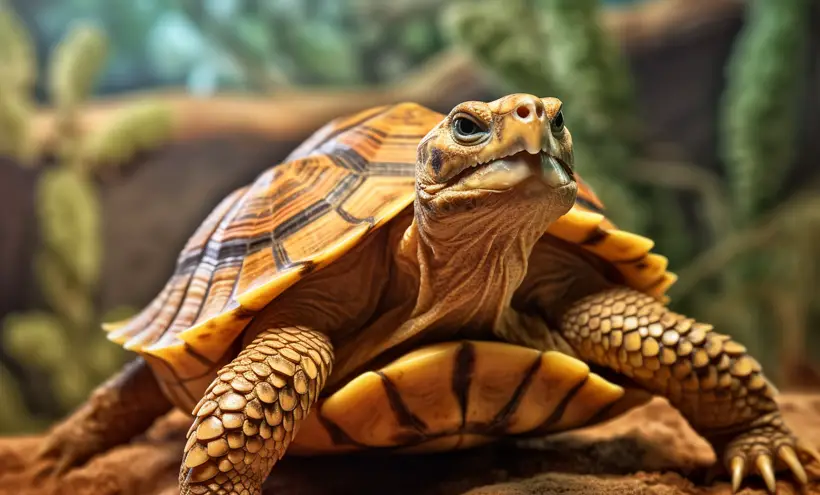
There are several types of enclosures to consider when keeping a tortoise outside. The most common of these enclosures include;
1. Tortoise pens
Tortoise pens/paddocks are ground-level enclosures with brick or stone fences to prevent wandering off. In some cases, tortoise pens also have wire mesh around the circumference and roof to keep out birds of prey.
Compared to greenhouses or tortoise tables, paddocks are easy to expand and can accommodate all types of tortoises.

2. Greenhouses
Though greenhouses cannot be considered truly outdoorsy, they allow tortoises to experience outdoor conditions like natural sunlight and warmth.
3. Tortoise tables
Tortoise tables are above-ground wooden structures elevated to about waist height for easy viewing and interaction. These tables often have a small shaded structure that lets your tortoise cool off when the sun gets too hot.
FAQs
Here are some answers to common questions about keeping tortoises outside.
Yes. Baby tortoises can live outside comfortably, depending on weather conditions. If the weather is too cold or hot, baby tortoises will experience more problems than adults. Hence, you should avoid keeping these young ones outside during winter or the hottest summer days.
Yes, tortoises can live outdoors throughout the year, depending on weather conditions. However, certain tortoise species can struggle to survive the freezing cold of winter. These include tortoises that live in tropical areas, such as sulcata and red-foots.
In general, most Asian and Mediterranean tortoise species hibernate in the winter to survive the harsh weather. Some of the most common of these tortoises include;
- Greek tortoises
- Hermanns tortoises
- Russian tortoises
Conclusion
Though all tortoises can live outside, you must ensure you have the right tortoise for your region’s climate. Keeping tortoises outside is great because there’s more space to exercise and bask in the sun, making them more comfortable.
When keeping tortoises outside, you should fence the area to ensure they don’t wander off and are well protected against predator attacks. Remember that extreme weather, like floods or freezing winters, can harm tortoises, especially the young ones.

